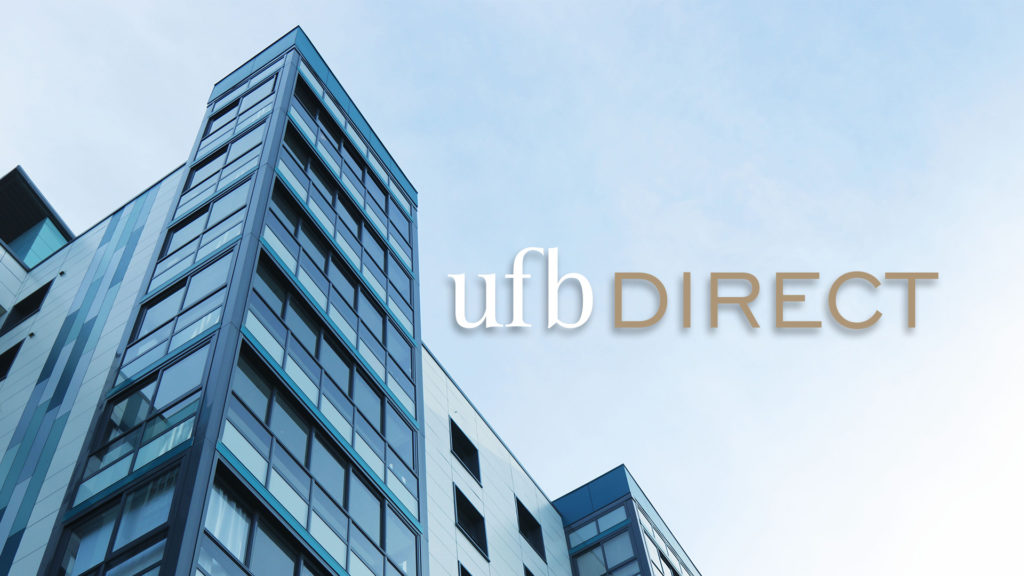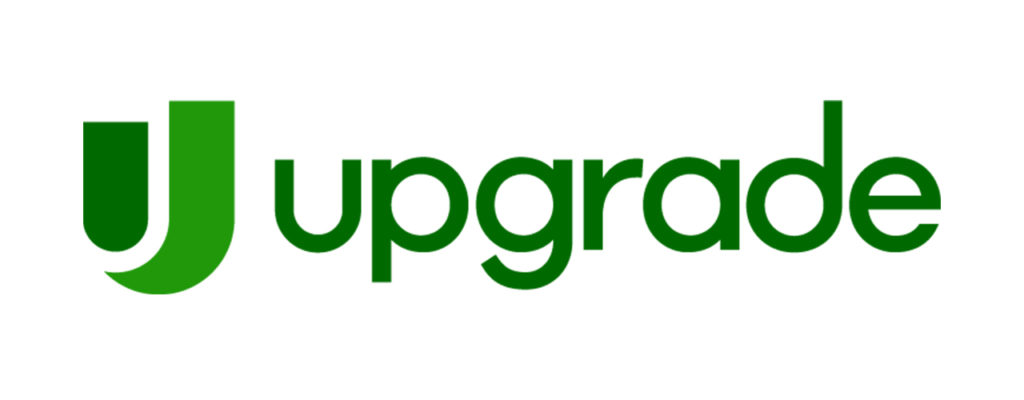Most products on this page are from partners who may compensate us. This may influence which products we write about and where and how they appear on the page. However, opinions expressed here are the author's alone, not those of any bank, credit card issuer, airline or hotel chain.
Upgrade
- Loan Amounts$1,000 – $50,000
- Loan Terms24 – 84 months
- APR Range8.49% - 35.99%
- Minimum
Credit Score560 or aboveA credit score is used to indicate the creditworthiness of an applicant, but it is only one of several factors considered for approval. These credit scores alone are not guarantees for approval and should only be used as guidelines.
Borrowers with less-than-stellar credit profiles may find Upgrade personal loans accessible, and its quick funding and flexible payment due dates convenient.
Quick Loans with Flexible Repayment Terms for Less-Than-Stellar Credit Borrowers
Upgrade is an online lending institution that offers many financial products, including personal loans, savings accounts, and checking accounts. Those with fair or poor credit backgrounds may find Upgrade loans accessible, as it has a lower credit score requirement than other lenders. Upgrade loans also come with flexible repayment due dates, the ability to apply for a joint loan, and funding as soon as one business day.
Although Upgrade’s maximum loan amount is relatively low at $50,000, the minimum loan of $1,000 makes it suitable for smaller loans. But keep in mind that Upgrade is one of several lenders that charge origination fees, which are deducted from your loan amount. So, you’ll need to account for these costs when researching lending options.
Pros
- Accessible to borrowers with bad credit
- Flexible loan terms
- Joint applications allowed
- Secured loan options
- Direct payment to creditors
Cons
- Has origination fees
- No physical branches
- Higher APRs than some competitors
Loan Uses
Borrowers can use their Upgrade personal loans for a variety of uses. Some of the most popular include:
- Debt consolidation
- Car repair bills
- Medical bills
- Moving expenses
- Home improvements
- Funding a major purchase
- Financing a wedding
- Building or growing a business
Upgrade doesn’t allow personal loan funds to be used for investments, post-secondary education expenses, gambling, or illegal activities.
Upgrade Personal Loan Details
|
Loan Amounts |
$1,000 – $50,000 |
|
APR Range |
8.49% - 35.99% |
|
Loan Terms |
24 – 84 months |
|
Credit Score |
560 or above |
|
Funding Time |
As soon as one business day |
|
Prequalification Option? |
Yes |
|
Co-Signer Allowed? |
No |
|
Joint Applications Allowed? |
Yes |
|
Income Requirements |
Not disclosed |
|
Origination Fees |
1.85% - 8.99% |
|
Late Fees |
Yes |
|
Prepayment Penalties |
No |
|
Autopay Discount |
0.50% discount when enrolled in autopay |
Highlights and Perks
Upgrade has a competitive personal loan offering with a number of perks:
- Flexible repayment terms: Upgrade offers repayment terms ranging from two to seven years, which can be beneficial for borrowers who desire flexibility.
- Joint loans allowed: If you can't qualify for a loan on your own, Upgrade allows applicants to apply for a personal loan with a co-borrower (but not a co-signer). Applying with a partner could help some borrowers qualify for a lower rate or higher loan amount than they would on their own.
- Mobile app available: Upgrade has a mobile app available, which you can use to view your loan balance, make loan payments, and even check your credit scores. It’s available on Google Play and the App Store.
- Autopay discount: Borrowers who enroll in autopay receive a 0.50% APR discount. While it might not seem like much, it can help you save a decent amount on interest over the life of your loan.
- Payment flexibility: Upgrade allows customers to change their payment due date to one that better fits their financial situation.
- Direct payments to creditors: If your goal is to consolidate debt, you'll like that Upgrade can send your funds directly to your creditors.
Drawbacks
When considering Upgrade for a personal loan, keep these potential drawbacks in mind:
- Origination fees: Upgrade charges an origination fee that ranges from 1.85% - 8.99% on all of its loans. This fee, which is deducted from your loan amount, can impact your borrowing costs.
- High maximum APR compared to other lenders: Although Upgrade offers a competitive minimum rate, its maximum rate is high relative to other lenders. If you have bad credit, you could end up with an APR that’s higher than 30%.
How to Qualify
You can qualify for an Upgrade personal loan if you meet the following eligibility requirements:
- You’re at least 18 years old (19 if you reside in certain other states)
- You have a verifiable bank account
- You have a valid email address
- You’re a U.S. citizen or permanent resident or living in the U.S. on a valid visa
Upgrade considers additional factors when you apply for a loan, such as:
- Your credit history
- Your credit score
- Your income
- Your debt-to-income ratio
Application Process
You can apply for an Upgrade personal loan online by taking these steps:
- Check your rate. Initiate the loan application process by checking your rate online. Upgrade will ask you to provide your loan purpose, desired loan amount, name, date of birth, address, and annual income. Once you’ve shared that information, you must create an Upgrade account. If you prequalify, you’ll be shown estimated rates and terms.
- Submit a formal loan application. If you like one of the offers shown, proceed with submitting a loan application. You may be asked to provide additional information, such as your government-issued ID, most recent pay stubs, and bank statements.
- Wait for approval. If approved, Upgrade will send you a loan agreement to sign. Review it carefully to see if you agree with the terms before signing.
- Receive funding. After you sign your loan agreement, funds are generally deposited into your account within one to four business days. If you opt to send funds directly to your creditors to consolidate debt, it can take up to two weeks or longer for the transaction to clear.
- Hard credit check. After your loan is funded, Upgrade will perform a hard credit check, which could temporarily lower your credit score.
- Repay your loan. Once you've received your loan funds, repay the loan on time to avoid serious damage to your credit. To ensure you don't miss a payment, enroll in autopay or keep track of your due dates with a spreadsheet.
Example of Loan Payments
If you take out a $5,000 loan with a three-year term at an APR of 15%, your estimated monthly payment would be $173.33 — and your total interest paid would be $1,239.76.
Reputation
Upgrade’s customers have mostly positive things to say about Upgrade. The lender has an A+ rating with the Better Business Bureau. Plus, the lender’s rating on Trustpilot is 4.6 out of five stars, based on more than 37,000 customer reviews.
Positive reviews praise the lender for providing quick funding and great customer service. On the other hand, negative reviewers complain that funding times were longer than expected. Others mentioned inaccurate reports to credit bureaus and trouble accessing the online account management platform.
Customer Service
Upgrade's customer support team is available Monday through Friday from 5:00 AM to 7:00 PM PST and Saturday through Sunday from 6:00 AM to 5:00 PM PST.
You can reach them via email at [email protected] or phone at 1-844-319-3909.
How Upgrade Compares
Upgrade is just one of several options you have for taking out a personal loan. Before taking out a personal loan or any financial product, compare rates and terms from multiple lenders to find the loan product for you.
Here’s a breakdown of how these lenders compare to Upgrade.
| Upgrade | SoFi | LendingClub | |
|---|---|---|---|
|
Best For |
Bad or fair credit |
Large loan amounts |
Small loans |
|
Loan Amount |
$1,000 – $50,000 | $5,000 – $100,000 | $1,000 – $40,000 |
|
APR Range |
8.49% - 35.99% | 8.99% – 29.49% | 9.57% – 35.99% |
|
Loan Term |
24 – 84 months | 24 – 84 months | 24 – 60 months |
|
Credit Score |
560 or above | 680 or above | 600 or above |
|
Origination Fees |
1.85% - 8.99% | 0% - 6% | 2% - 6% |
Upgrade vs. SoFi
SoFi offers personal loans ranging from $5,000 – $100,000, which makes it a better choice for consumers who need to take out a larger loan. SoFi and Upgrade have similar minimum APRs, but SoFi’s maximum APR is lower.
Unlike Upgrade, SoFi doesn’t charge any origination fees, though you will need good to excellent credit to qualify.
Upgrade vs. LendingClub
LendingClub offers personal loans with a similar APR range to Upgrade and both have relatively high maximum APRs. While both lenders charge origination fees, LendingClub’s maximum origination fee is slightly lower.
LendingClub also offers less flexible repayment terms than Upgrade. So, if you need a longer repayment term, Upgrade might be a better option. However, since these lenders have similar APRs, it can be a good idea to check your rates with each one to see which one offers you a better deal.
FAQs
-
Once you accept an offer and your loan is funded, Upgrade will perform a hard credit check, which could temporarily ding your credit by a few points. Also, it will report any late payments to the three major credit bureaus once you're at least 30 days past the due date. As a result, your credit score can suffer a major blow. But if you keep up with your monthly payments, a personal loan can actually be used to improve your credit.
-
Yes, Upgrade is a legitimate lender. Though they’ve only been around for five years, Upgrade has made over $19 billion of credit available to customers. It has an A+ rating according to the Better Business Bureau and has been accredited since 2017.
-
Upgrade doesn’t disclose its minimum credit scoring requirement. But several third-party websites report that borrowers might qualify for an Upgrade personal loan with a credit score as low as 560 or above. If you have bad credit, applying with a co-borrower who has good credit could improve your approval odds.
-
Upgrade offers personal loan amounts from $1,000 – $50,000. But the amount you can borrow depends on several factors, like your credit history, income, and debt-to-income ratio.


















